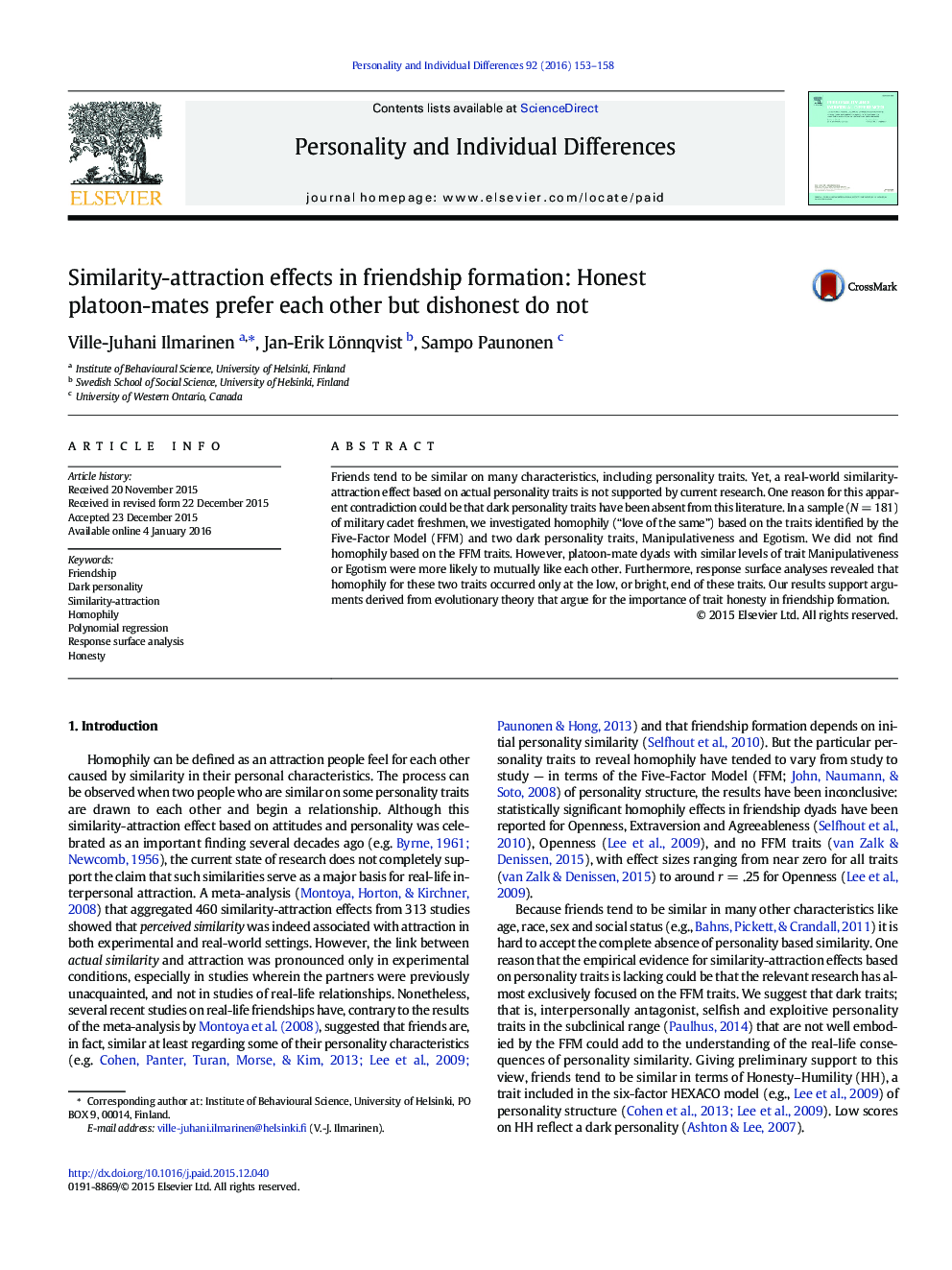| Article ID | Journal | Published Year | Pages | File Type |
|---|---|---|---|---|
| 889803 | Personality and Individual Differences | 2016 | 6 Pages |
•Similarity-attraction hypothesis was tested for FFM traits and for two dark personality traits.•Homophily was found for Manipulativeness and Egotism, but not for any of the FFM traits.•Homophily-effects were robust only at the “bright” ends of these dark trait dimensions
Friends tend to be similar on many characteristics, including personality traits. Yet, a real-world similarity-attraction effect based on actual personality traits is not supported by current research. One reason for this apparent contradiction could be that dark personality traits have been absent from this literature. In a sample (N = 181) of military cadet freshmen, we investigated homophily (“love of the same”) based on the traits identified by the Five-Factor Model (FFM) and two dark personality traits, Manipulativeness and Egotism. We did not find homophily based on the FFM traits. However, platoon-mate dyads with similar levels of trait Manipulativeness or Egotism were more likely to mutually like each other. Furthermore, response surface analyses revealed that homophily for these two traits occurred only at the low, or bright, end of these traits. Our results support arguments derived from evolutionary theory that argue for the importance of trait honesty in friendship formation.
Graphical abstractFigure optionsDownload full-size imageDownload as PowerPoint slide
